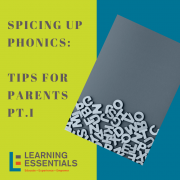Physical Fitness and Sports Month: Common Injuries and How to Avoid Them
As the weather warms up, it is likely that you and your family will be spending more time outside. While spring and summer are opportune times to get the kids involved in sports and other outdoor activities, they are also the months in which sports-related injuries and visits to the ER traditionally spike. Since May is Physical Fitness and Sports Month, it only seems fitting to discuss ways to be proactive whenever possible during these accident-prone activities.
It is no surprise that USA Today declares that, based on emergency room reports, football and basketball related injuries account for more than double that of all other sports-related injuries combined. High-contact sports, while great for fostering athletes who are intense, resilient, and competitive, subsequently also yield a much more risky playing environment.There are, however, a few things that parents can keep in mind to help inform and protect children competing in a wide range of sports.
Preliminary Research
When considering school sports teams, training camps, and club teams in your area, do a little additional research. Seek information about safety seminars, preventative exercises, and strength training that may help your child recover from potential injuries, or even avoid a sports-related injury altogether.
Pain vs. Discomfort
Talk to your child-athlete about the difference between pain and discomfort. Building mental and physical toughness is a major component of competitive sports; however, playing through the pain is not always the greatest mantra to live by. Stress fractures, sprained or strained tendons, and other injuries related to overuse are completely preventable if kids learn to listen to their bodies. Often times, young athletes want to appear tough at the risk of exacerbating an injury—so, they play through the pain when they truly should not. Encourage your child to track recurring injuries and speak honestly with coaches and trainers about the extent of the pain.
Rest and Recovery
Many kids participate in multiple sports per season. The versatility is great for fostering well-rounded and well-conditioned athletes, but it is a parent’s job to recognize when a child may be getting physically or mentally burnt out. Be sure to monitor your child’s sleep and recovery time in between high-impact workouts and intense conditioning practices. Rest is key when rehabilitating an injury that needs significant recovery time. Concussions are especially concerning since a child’s brain is still developing. If your child has sustained a concussion, it is imperative that he or she fully recover before continuing with any physical activity. Studies indicate that repeat concussions sustained during childhood lead to many issues, including prolonged recovery time and a possible link to degenerative brain diseases down the road.
Hydration
Drinking plenty of fluids may sound like an obvious piece of advice, but children are more at risk of dehydration during the summer months than you may think. According to Webmd.com, “a child’s body surface area makes up a much greater proportion of his overall weight than an adult’s, which means children face a much greater risk of dehydration and heat-related illness.” Once your child has realized that he feels thirsty or has a dry mouth, he is already experiencing the first signs of dehydration. If left to continue, dehydration can lead to heat exhaustion or heat stroke—both of which require immediate medical care.
With a little planning, you can be proactive in protecting your child from common sports-related injuries this summer. Go team!






